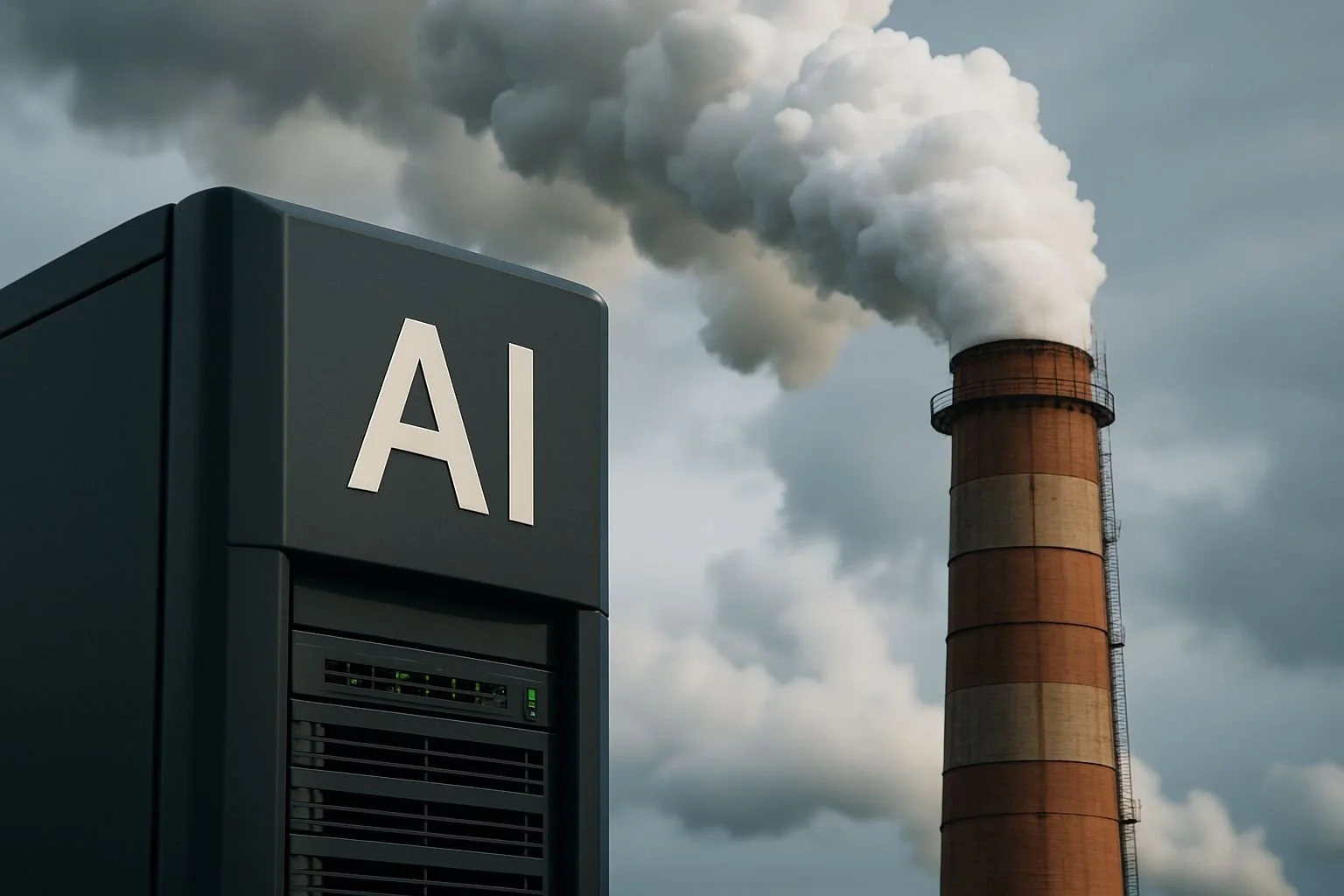How big is the environmental impact of AI in 2025
Artificial Intelligence (AI) is quickly becoming a big part of our lives in 2025. It’s helping businesses become more efficient, helps our daily tasks easier, and changing the way we live and work. But as Artificial Intelligence keeps growing, more people are starting to wonder about something important:
How much is it affecting the environment?
In this blog, we’ll break down the environmental impact of Artificial Intelligence. what the problems are, what’s being done about them, and how we can move toward a greener future with smarter technology.
AI Is Growing Fast and So Is Its Energy Use
In 2025, AI tools like ChatGPT are everywhere. People use them to write emails, plan their day, manage businesses, and even create art. AI helps millions of people every day.
But all of this comes with a cost:
More electricity: It takes a huge amount of power to train and run AI models. For example, just one model like ChatGPT-3 used over 1,000 megawatt-hours of electricity a year that’s like running 100 gas-powered cars nonstop.
Carbon emissions: AI data centers (where all the computers that run AI live) could use up to 4% of the world’s electricity by 2030. If we don’t use clean energy, carbon emissions from AI could grow a lot in just a few years.
Water use: These data centers also need tons of water to stay cool. That’s a problem, especially in places where water is already limited.
More buildings: Companies are spending billions to build more data centers, which use more land, power, and resources.
Why Does AI Use So Much Power?
AI needs a lot of energy for a few reasons:
Big models: Today’s AI models are huge. They’re trained on massive amounts of data and need powerful computers to work.
Serving millions of users: Even after training, AI keeps using power to give answers, show search results, or create images for users around the world.
Constant updates: AI tools are always improving. But every update means more training and more energy.
Working together: Some AI systems use many models at once to get better results. But this also uses even more resources.
The Bigger Picture
In the United States data centers might use 20% to 40% more electricity this year. By 2032, experts believe they could be using up to 20% of all the electricity in the country, It’s mostly because of Artificial Intelligence. Even though technology is getting better and more efficient, the use of AI is growing even faster which means energy use is still going up.
Can AI Help Lower Its Own Impact?
Surprisingly, yes Artificial Intelligence can actually help fix some of the problems it causes. Here’s how:
Smarter energy use: Artificial Intelligence can help data centers run better by using less energy and producing less waste.
Better weather forecasts: AI can predict storms and natural disasters more accurately, which helps people prepare and stay safe.
Less waste: In farming, factories, and city planning, AI helps reduce the amount of materials we use which can help us make better choices.
Fighting climate change: If we use AI the right way, it could help cut down harmful emissions by a lot enough to make a big difference by 2035.
Why It's Hard to Know Artificial Intelligence’s Full Impact?
We can't really measure the energy use of AI or how much pollution it causes. simply because some companies don’t report everything or they have different ways of counting. Also, AI is used in many different countries and each one uses different types of energy. And we need to think about climate fairness. Poorer communities and countries may suffer more from climate change, even though they’re not the ones building or using most of the AI systems.
How We Can Build Greener AI?
To make sure AI helps the planet instead of hurting it, we need to take action:
Make AI more efficient: We need smarter software, cooler data centers, and energy saving processors.
Use clean energy: AI companies should power their data centers with solar, wind, and other renewable sources.
Focus on climate solutions: Let’s use AI for the better causes like fighting pollution, protecting the nature, and make better environmental choices.
Be honest and open: Governments and companies should report AI’s real impact and follow eco friendly rules.
Small Businesses Can Help Too
You don’t need to be a tech giant to care about the planet. Even small businesses can use AI to be more eco friendly. For example, a cleaning business that uses AI to plan routes and manage supplies can save fuel, reduce waste, and run more smoothly.
Take Sparkly Maid Orlando, a local cleaning service using AI tools to schedule jobs and manage inventory more efficiently. It’s good for the planet and for business.
Leading the Way
Digital marketing agencies like Torres Digital Marketing Chicago are helping clients use AI responsibly. They don’t just help companies grow—they also guide them on how to do it without harming the environment.
Whether it’s a big brand or a local service provider, Torres Digital Marketing Chicago helps businesses stay modern and mindful at the same time.
The Bottom Line: We Need Balance
AI is changing the world, and fast. But we can’t ignore the environmental side of that progress. The energy use, emissions, and water demand are real and growing.
Still, we don’t need to panic, we need to act. With smarter choices, clean energy, and responsible tech, we can make sure AI supports both innovation and sustainability.
So, how big is AI’s environmental footprint in 2025?
Big but manageable. With the right tools and mindset on how to properly use , we can grow with AI and protect our planet at the same time.
